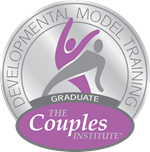Group Therapy
NOTE: GROUP THERAPY IS ON HOLD DUE TO THE CORONA VIRUS EPIDEMIC
I strongly believe in the power of group therapy to facilitate change. Groups offer the opportunity to learn from your peers, to be with people who understand what you are going through, and to grow and change in an accelerated learning environment. At Tidelands I offer groups when we have sufficient client interest to fill a group, typically 8 to 10 people.
STEPPS Group: Group therapy for Borderline Personality Disorder
STAIRWAYS Group: Advanced therapy for Borderline Personality Disorder
Borderline Personality Disorder Family Support Group
Groups for the Treatment of Borderline Personality Disorder
I offer two long-term groups that are designed specifically for the treatment of Borderline Personality Disorder. Both the Beginning and Advanced Groups are about 44 weeks long and include an interpersonal therapy component, a psycho-educational component, and skills training (distress-tolerance skills, mindfulness skills, behavioral management, self-compassion, relationship skills, etc.). The group program was developed in 1995 at the University of Iowa and is an evidence-based treatment approach. We have seen remarkable growth and change in clients who have participated in these groups.
The Beginning Group: STEPPS Group (Systematic Training for Emotional Predictability and Problem Solving). In STEPPS Group we begin by learning more about Borderline Personality Disorder. Because the name Borderline Personality Disorder is outdated and inaccurate, in STEPPS we call it an Emotional Intensity Disorder (EID). Emotions, particularly negative emotions, are experienced with greater frequency and intensity for most people with EID. It is as if their emotional volume control is always on full volume. Symptoms, behaviors, causes, brain differences, co-occurring disorders, treatment options, and recovery are all explored in the beginning group.
The beginning group also begins the core tasks of change: understanding unhealthy cognitive filters (also called schemas) and learning how to challenge and change them to healthier beliefs, as well as developing a core set of skills for dealing with "emotional intensity episodes." We explore cognitive skills like distancing, challenging and distracting; behavioral skills like abuse avoidance, setting boundaries, and exercise; dialectical behavioral skills such as distress tolerance and mindfulness; and sense of self skills like self-compassion, validation, integrity and forgiveness. This learning happens in a supportive therapeutic environment where you have the opportunity to share your insights, what skills are working for you, and the challenges you are facing.
The Advanced Group: The STAIRWAYS Group builds on the skills learned in STEPPS by supporting you with achieving your life goals. Dealing with a mental illness often disrupts normal developmental and life-span growth and change. The chaos that EID can bring into one's life can side-track important life plans. Once the skills to manage the EID and the resulting chaos have been learned, the focus turns to skills that will support you in building a meaningful and nurturing life. These include goal-setting, assertiveness training, developing a life plan, building healthy relationships and family, parenting skills, developing hobbies and interests, and building a spiritual life. The STAIRWAYS group helps to anchor and reinforce the skills learned in STEPPS and continues the work of schema change. Because treatment for EID and schema change is typically a 2-7 year process, the STAIRWAYS Group offers the opportunity to continue treatment in a supportive therapeutic group setting.
Borderline Personality Disorder Family Support Group
I have found there to be an overwhelming need for education and support of partners, family members and close friends of people with Borderline Personality Disorder. The STEPPS and STAIRWAYS program advocates for family involvement as part of a "Reinforcement Team" for the person with BPD. However, family members are often at their "wits end" by the time the person with BPD gets into therapy. What they have tried to do to help (giving in, being supportive, tough love) often only serves to trigger anger and more emotion. People with BPD may not respond in the way we would hope or expect them to when we attempt to help or set limits.
The Family Support Group is a 12-week long group with three main areas of focus:
- Education about Borderline Personality Disorder: What is a personality disorder? What are the diagnostic criteria, causes, and differences in brain structure and function? What are effective treatment approaches? How do you deal with suicidal and self-injury behaviors? and more.
- Skills Development: Learn and practice a core set of skills for effectively responding to someone with BPD who is experiencing an emotional intensity episode. Learn about distancing, validating, active listening, setting boundaries, challenging, mindfulness, and more.
- Family Discussion: This is one of the most important parts of group. Families get the opportunity to share their experiences with other families, discuss the stresses that are faced, talk about what has helped and what hasn't, ask each other questions, etc. Families typically find this to be extremely helpful and informative.
The Family Support Group is offered when there is sufficient interest to create a group with 10-14 participants.







